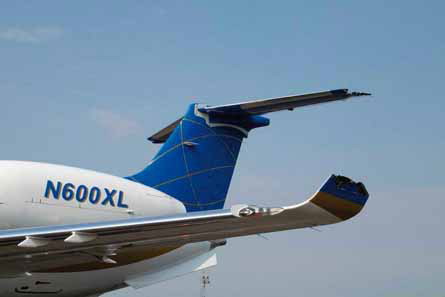Investigators reveal communications and warning system problems in run-up to fatal mid-air crash over Brazil
Brazilian investigators have detailed the extent of the communications problems that preceded September's fatal collision between a Gol Boeing 737-800 and an Embraer Legacy executive jet.
Neither aircraft's airborne collision-avoidance system issued a warning and neither jet took evasive action, according to Brazilian accident investigation authority CENIPA's preliminary findings.

The collision occurred at flight level 370, about 20km (11nm) north-west of the NABOL waypoint on the UZ6 airway between Brasilia and Manaus, at 16:56:54 local time on 29 September. All 154 passengers and crew on board the 737 were killed after the Legacy's left winglet sheared through the left wing of the Gol jet, causing it to lose control and enter a dive. Cockpit-voice and flight-data recorder information on the 737 was lost at 7,890ft (2,400m) - possibly indicating the jet broke up.
At 15:51 the Legacy crew communicated with Brasilia's Cindacta-1 air traffic control centre and 4min later the Legacy crossed the Brasilia VOR and entered airway UZ6, still at FL370. Seven minutes later, at 16:02, the Brasilia centre lost secondary radar information from the Legacy.
Neither the Legacy crew nor the Brasilia centre attempted to communicate for 24min, until 16:26 when the centre tried to contact the executive jet. Controllers made seven attempts over 8min to reach the Legacy crew. Primary radar contact was intermittent, and was lost completely at 16:38.
Some 10min later, the Legacy made 12 attempts to contact the Brasilia centre. Soon after the last of these, it received a communication, at 16:53:39, from Brasilia controllers who were blindly transmitting an instruction for the Legacy to switch frequency to the Manaus Cindacta-4 centre. The controllers gave two frequencies - 123.32MHz and 126.45MHz - but the Legacy crew was unable to hear them.
The Legacy pilots tried to contact the Brasilia centre to clarify frequency information, but their message was not received, and the pilots made seven more attempts.
Their final attempt was at 16:56:53 - one second before the mid-air collision. The aircraft collided with wings level the Legacy's left winglet was sheared off as it tore through the 737's left wing. The Legacy also suffered damage to its left horizontal stabiliser tip, probably from the 737's left winglet.
In the moments after impact, the Legacy tried nine more times to reach the Brasilia centre. Three minutes after the collision, the Manaus centre began receiving secondary radar and identification information from the Legacy. But attempts by Manaus controllers to contact the Legacy were unsuccessful, and an effort by the Legacy crew to contact the Manaus centre via another aircraft, operating with the call-sign Polar 71, also failed.
The Legacy crew was trying to obtain radar vectors for an emergency landing at Cachimbo air base but, although Manaus had received the emergency transponder code "7700" from the jet, it was unable to reach the crew despite repeated radio calls.
At 17:13:16 the aircraft operating as Polar 71 was able to contact Manaus and relay the Legacy's emergency declaration to controllers. The jet landed safely at Cachimbo with no casualties.
The Legacy suffered damage to its left winglet and horizontal stabiliser |
Source: Flight International
























